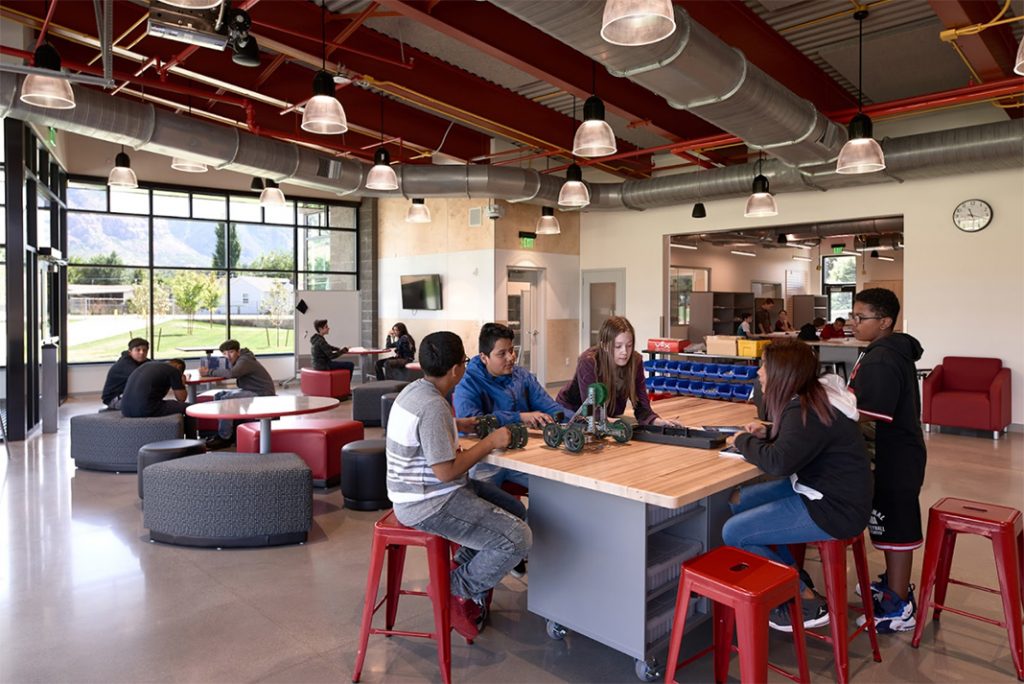Many teachers are leaving schools for better pay and more autonomy in new careers https://t.co/EASjoTTRGo via @WSJ
— Daniel Christian (he/him/his) (@dchristian5) February 1, 2022




Many teachers are leaving schools for better pay and more autonomy in new careers https://t.co/EASjoTTRGo via @WSJ
— Daniel Christian (he/him/his) (@dchristian5) February 1, 2022
Remote School Meltdowns? Research Gives Window Into Student Well-Being During the Pandemic — from edsurge.com by Jeffrey R. Young
Excerpt:
To understand the stakes of the image, it’s worth looking to a new Harvard University research report that begins: “Although children have largely been spared the direct health consequences of coronavirus disease 2019 (COVID-19), there is increasing concern about the pandemic’s influence on other aspects of child health and development.”
What Are The Best Websites For Teaching Math Online? — from teachthought.com by Jennifer Smith
70+ Awesome Websites for Teaching and Learning Math — from weareteachers.com
Learning math can sometimes be a challenge. Especially if you’re doing virtual or distance learning. Math websites to the rescue! We’ve gathered a list of teacher-recommended sites that includes resources, games, freebies, and innovative programs for teaching math. These will help keep students engaged, learning, and having fun.
Top Websites Ranking for Math in the world — from similarweb.com
Also, check out the public media resources in your state/area/region. For example, here in Michigan:
Addendum on 1/30/22:
What Could Web3 Mean for Education? — from edsurge.com by Rebecca Koenig

Excerpts:
It’s an ecosystem that could transform schools—sites for teaching and learning—into marketplaces—sites for buying and selling.
That includes higher education. In the vein of MOOC platforms, Web3 systems could make it easier to “unbundle” college courses from degree programs and universities, enabling individuals to sign up for whatever classes they want and instructors to market their courses to consumers directly, says Vriti Saraf, a former charter school teacher and administrator and Teach for America alumna who founded a startup called k20 Educators.
Tech & Learning Magazine Names the Winners of the Best of 2021 — from techlearning.com
Tech & Learning’s judges deemed these products as standouts for supporting teaching and learning in 2021
Excerpt:
Tech & Learning magazine has named the winners of the Awards of Excellence: Best of 2021 contest, which recognizes educational technology that exceptionally supported teachers and students last year.
The contest focused on outstanding products that supported education this past year no matter the learning environment, whether face-to-face, remote, or anything in between. Eligible products included hardware, software, curriculum, and more, all divided by grade levels to make it easier to find the solutions you need.
Each nominee answered the following questions: What specific problem does this product solve? How did your product exceptionally support teaching and learning in 2021? How does your product address the challenges facing education today?
6 Ed Tech Tools to Try in 2022 — from cultofpedagogy.com by Jennifer Gonzalez
Excerpts:
This year, for the very first time, I hired a team of ed tech experts to help me with the update. The task was becoming overwhelming and I knew if I was going to keep it up, I had to have some help. Here they are below: Marnie Diem, Brandie Wright, Lucia Hassell, and Kim Darche.
…
5. EVERFI
everfi.com/k-12
Originally a site that offered free financial literacy courses to students, EVERFI has expanded its course offerings to include career exploration (including one specific to STEM careers), social and emotional learning, diversity and inclusion, and health and wellness. Their newest additions are courses in healthcare literacy, data science and banking fraud, and compassion and empathy.
Tip of the week: Make websites more readable — from fastcompany.com by Jared Newman
How to easily hide ads, auto-play videos, and other clutter in every major browser.
Excerpt:
Ever get annoyed by the intolerable reading experience on certain websites? By activating your browser’s reader mode, you can make web pages more reader-friendly by hiding ads, menus, pop-ups, and other distractions. Some web browsers even let you switch to reader mode automatically on specific websites. Here’s how:
My fiancee is a HS teacher. Her job is wayy harder than mine, but I get paid much more.
It’s a travesty how little teachers are paid in the US. Here are three top side hustles K12 teachers can do online to earn more ?
— Kevin Zhang (@kevinzhangEDU) January 18, 2022
Also see:
1 Million More Tutors in the US — from typeshare.co by Kevin Zhang
Excerpt:
There are roughly 17M US high school students across public and private schools. If the top 6% of US high school students were tutors, we would have 1M more tutors.
Imagine what that would do for our US K12 education system and our society.
There are 1M high school teachers currently in the US. We would have an additional tutor per teacher.
So how do we incentivize students?
From DSC:
These ideas are specially meant for you entrepreneurs and vendors out there! Including such vendors and products such as Zoom, Cisco Webex, Microsoft Teams, Adobe Connect, and others!
This idea could also be profitable and fun for CMS/LMS vendors and products such as Instructure/Canvas, Blackboard Learn, D2L, Google Classroom and others!
How might we take engagement within an online-based learning environment to an entirely different level? Well, check out these ideas!
What if learning could feature more personality? Be more fun? Have shades of game shows even!? Yet at the same time, if you are a learner who ventures into the ideas that I’m about to suggest, you had better be ready to back up and explain your perspective/position!
Here’s what I’m getting at. You know when you are messaging you can insert some fun motion graphics into your message?
Well, what about if we could select from a bank of very short video clips during a live/synchronous discussion — or during an asynchronous-based discussion board posting — that contained a famous movie clip/message? Then, if you choose to do that, you are then required to explain your perspective/position.
| Video | What the video could mean |
| “Beam me up Scotty! There’s no intelligent life down here.” | This is ridiculous. No one’s making any sense here. |
| “You meddling kids.” From various bad guys on Scooby-Doo. |
You’re messing with me. I don’t agree with your perspective, and here’s why. |
| “That does not compute.” Spock from Star Trek. |
I don’t agree with your answer. That doesn’t make any sense and here’s why. |
| “You can’t handle the truth.” Jack Nicholson in “A Few Good Men.” |
Are you sure you want to know the truth about this topic? Can you handle such a truth? This is about to get real in here. |
| “Do. Or do not. There is no try.” Yoda. Star Wars |
Take action on something; do something. |
| “I’ll be back.” Arnold Schwarzenegger in various films. |
I’m stepping away from my desk…but I’ll be back soon. or You may have one this round, but I’ll be back for another round. |
Learners within a learning community could use entertainment and have some fun while also having to backup their position/perspective! Talk about engagement! Shooooot.
And/or…learners could be like DJ’s at radio stations — and, on the fly, select from a bank of songs, audio-based noises and sounds!
The danger here is that humor can sometimes backfire and/or offend someone. So we would need to watch the content that’s available to choose from within the repositories of media. We would want to do some serious beta testing here to make sure things stay on the fun, entertaining, and educational sides of things.
Such an approach could introduce opportunities for creativity and for honing one’s ability to think on one’s feet. Also, learners could work on their communication skills as well as their ability to debate or persuade, or to practice some critical thinking.
While more gameshow-like on the surface, if you use such media, you have to explain why you used that media.
Trends Shaping Education in 2022 — from gettingsmart.com by Tom Vander Ark
Key Points:
My “If-Then” slides for transitioning curriculum between in-person and e-learning are available here (I made them for the districts I work with specifically, but everyone is welcome to use them)!https://t.co/inc9Aaz0o5 #LTCcoaches pic.twitter.com/BIEjlaTSAU
— Jennifer Leban (@mrsleban) January 13, 2022
Methods and tools to develop future-ready skills — from blog.neolms.com by Rachelle Dene Poth
Excerpt:
Because of the changes that we experienced in the past year, I believe that it is important to have various options, whether teaching in-person, hybrid, or virtually. Choosing methods like Genius hour or project-based learning, activities such as scavenger hunts or learning stations, or selecting digital tools that promote more interaction with and between students will help foster the development of essential future-ready and SEL skills.
There are many methods and tools to explore, but it’s important to focus on the why behind the choices we make for our students. The use of digital tools promotes collaboration, communication, creativity and many more essential skills while also promoting the power of choice for students to share what they have learned.

Also see:
Escape rooms have become very popular as a place teams can go to work out how to get free from the room in which they are “trapped.” It’s like a real-world version of a computer game that makes you work together to solve puzzles to escape from somewhere.
Breakout EDU helps to bring that experience to educators so as to better engage students and help them learn while having fun.
Here’s a nice moderator checklist, courtesy of Eva Keiffenheim — from her Learn Letter, dated 1/12/22
Also see the following item from Eva Keiffenheim:
But how does exercise transform your brain? She shares the three main changes…
6 Elements of Thriving Learners — from gettingsmart.com by Randy Fielding
Key points:

Mound Fort Innovation Center, an environment where curiosity & mastery are nurtured
5 Ways Teachers Can Help Students in Their Online Learning Journey — from edtechreview.in
Excerpt:
With the growing prominence of online education and its integration into the daily lives of students, teachers can play an active role in helping students in their online learning journey. Here’s how: